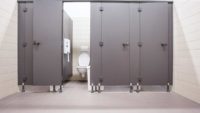The National Standard Plumbing Code (NSPC) is often called the New Jersey Plumbing Code. That is because New Jersey is the only state that adopts this code on a statewide basis. Other adoptions are by local jurisdictions in various states.
One of the unique aspects of the NSPC is that it is not published as a code. The only document available for purchase is the illustrated version of the code. There are illustrations throughout the code; however, the illustrations are technically not a part of the code since they are prepared independently of any code changes. There is language in the beginning of the code explaining that the illustrations are attempting to show one means of complying with the code.
Since the transfer of the NSPC from PHCC — National Association to IAPMO, the procedures regarding code changes have remained unchanged. The process is simply a one-and-done code change hearing. Every three years, the NSPC Code Committee meets for a day, listens to testimony on proposed code changes and votes on the final action of the changes. The end result is an updated code.
In the future, IAPMO may wish to analyze whether the one-and-done code change process is appropriate. Another unique feature of the NSPC is that the Code Committee meets privately prior to the code hearing to review the code changes. No other model code allows their committees to meet privately. This is reminiscent of the days when codes were being written in smoke-filled back rooms.
To the credit of the NSPC process, the Committee does contact proponents after the private meeting recommending changes that they may want to consider. If the proponent does not consider the suggested amendment, it is almost a guarantee that the amendment will be proposed by a Committee member during the hearing.
During the code hearing this August, the majority of the proposed changes were the updating and addition of standards. IAPMO has been gradually improving the code by having the standards appear in the body of the code, referencing when they apply. Previously, the NSPC merely provided a laundry list of standards that you would then have to figure out where to apply.
All-gender toilet room requirements were added to the code. Additionally, a reference to IAPMO Z124.10 was added for water closet and urinal partitions. All-gender toilet rooms will be required to have Class A privacy partitions, as defined in the standard. Class A privacy partitions extend to within 4 inches of the floor and rise a minimum of 7 feet. The partitions and doors are designed to prevent visual observation, plus there must be a means of identifying on the outside of the partition that the compartment is occupied.
There were two major changes proposed to the venting chapter. The New Jersey League of Master Plumbers proposed to completely revise common venting and wet venting. The justification for this proposal was very weak, stating that the current requirements are causing practical difficulties for installations in conventional framing applications. The proposal is to go back to a previous edition of the code requirements. The only problem is that the previous edition had minor errors in the sizing of many of the piping arrangements. Basically, the change would revert back to the same sizing errors. The change was approved, as submitted.
The other major change was the addition of requirements for the installation of air admittance valves. The current edition of the NSPC allows other venting methods with a reference to Appendix E. Within the appendix are requirements for air admittance valves. The proposed change would move the requirements from the appendix into the body of the code. The change to move the requirements into the body of the code was approved.
Some other major changes were the inclusion of three new appendices. The appendices are on Legionella, non-sewered sanitation and horticulture facilities. All three appendices are derived from the IAPMO Uniform Plumbing Code (UPC). These code changes are an attempt to bring the NSPC more in line with other model codes, such as the UPC.
The horticulture appendix was originally proposed to the UPC as a cannabis growing facility chapter. However, during the UPC discussions, it was pointed out that the requirements apply to more than just cannabis. An IAPMO Working Group expanded the requirements to apply to any indoor growing facility. I immediately thought of Gotham Greens in Chicago. They supply our area with lettuce and other produce, all grown in a former factory building converted to indoor horticulture in Chicago.
All three appendices were approved.
Congratulations, Ed!
I have to give a shout-out to my older brother, Lt. Col. Ed Ballanco. Ed is my favorite ski buddy. We have skied around the world.
This Nov. 1, Lt. Col. Ed Ballanco will be inducted into the New Jersey Aviation Hall of Fame. Ed was a fighter pilot in the United States Air Force. For a large part of his career, he was a Wild Weasel pilot flying F-4s. During Desert Storm, Ed flew 20 combat missions over Iraq. I loved his description of opening night, flying over downtown Bagdad. He is credited with 11 SAM site kills during Desert Storm.
Every time the Smithsonian Channel replays the show “Air Warriors, F-4 Phantom,” I usually receive either a call or an email from colleagues and friends. One colleague said, “I was watching a show on the F-4 last night and there was a guy that had the same spelling of his last name as yours. He also looked a lot like you. Do you have a brother that is a fighter pilot?”
Of course, my response was, “Yes, that is my older brother Ed. He flew F-4s for most of his Air Force career.”
The response back was, “Wow, that’s impressive. You must be proud of him.”
Absolutely, I am proud of my big brother! Like me, he has a mechanical engineering degree. He also has a master’s degree in mechanical engineering. Similar to the way they do it in the movie, “Top Gun,” he is introduced as, “This is Lt. Col. Edward Ballanco, call sign “Victor.”
Congratulations, Ed! I’ll be in New Jersey on Nov. 1 to see his induction into the New Jersey Aviation Hall of Fame.
The views expressed here are strictly those of the author and do not necessarily represent PM Engineer or BNP Media.




